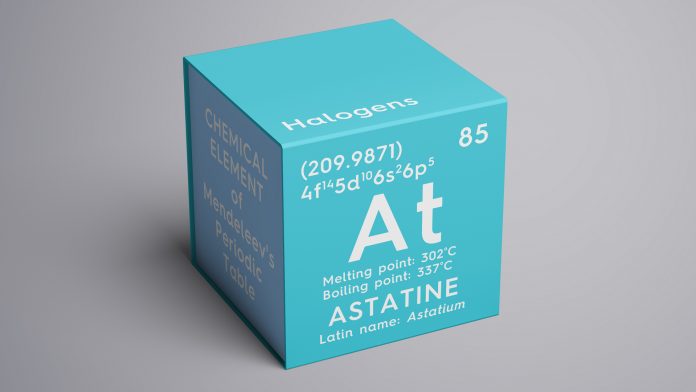Researchers at CERN’s ISOLDE facility have successfully measured the electron affinity of astatine, the rarest naturally occurring element on Earth.
For the first time, scientists using CERN’s ISOLDE nuclear-physics facility have measured the electron affinity of the chemical element astatine, the rarest naturally occurring element on Earth. In addition to increasing understanding of its properties, the findings of the study have practical implications because astatine is a promising candidate for the creation of chemical compounds for cancer treatment by targeted alpha therapy.
Electron affinity, one of the most fundamental properties of a chemical element, refers to the energy released when an electron is added to a neutral atom in the gas phase to form a negative ion. As well as helping to develop our understanding of an element’s ionisation energy, electron affinity defines several other traits of an element, such as electronegativity (its ability to attract shared electrons in chemical bonds).
Astatine is a member of the halogen family, which includes chlorine and iodine. Since its discovery in the 1940s, studies on astatine have mainly been based on theoretical calculations or on extrapolation from the properties of its relatives. The lack of research surrounding astatine is due to its lack of availability on Earth. Astatine can usually be found following the decay of thorium and uranium.
New findings on the rarest element on Earth
In the study, astatine atoms were produced with other atoms when the research team fired a high energy beam of protons from the Proton Synchrotron Booster at a thorium target. Atoms of astatine were negatively ionised, and ions of an isotope, named 211At, were extracted. These were sent to a measurement device where a laser light of tuneable energy was shone on the ions, measuring the energy required to extract the electron of the 211At ion and turn it into a neutral atom.
“Our results could be used to improve our knowledge of this release reaction and the stability of the 211At compounds being considered for targeted alpha therapy,” says lead author of the study David Leimbach. “In addition, our findings pave the way to measurements of the electron affinity of elements heavier than astatine, potentially of the superheavy elements, which are produced one atom at a time.”
When studying astatine’s electron affinity, ISOLDE researchers obtained a value of 2.41578 eV. This value indicates that the electron affinity of astatine is the lowest of all halogens but is greater than that of any other elements outside the halogen family.
“With the present result, we conclude a ten-year research effort at ISOLDE to determine the fundamental properties of astatine, the ionisation energy and the electron affinity, which together finally enabled us to derive the electronegativity of astatine,” adds Sebastian Rothe, lead author of the earlier ISOLDE study.









